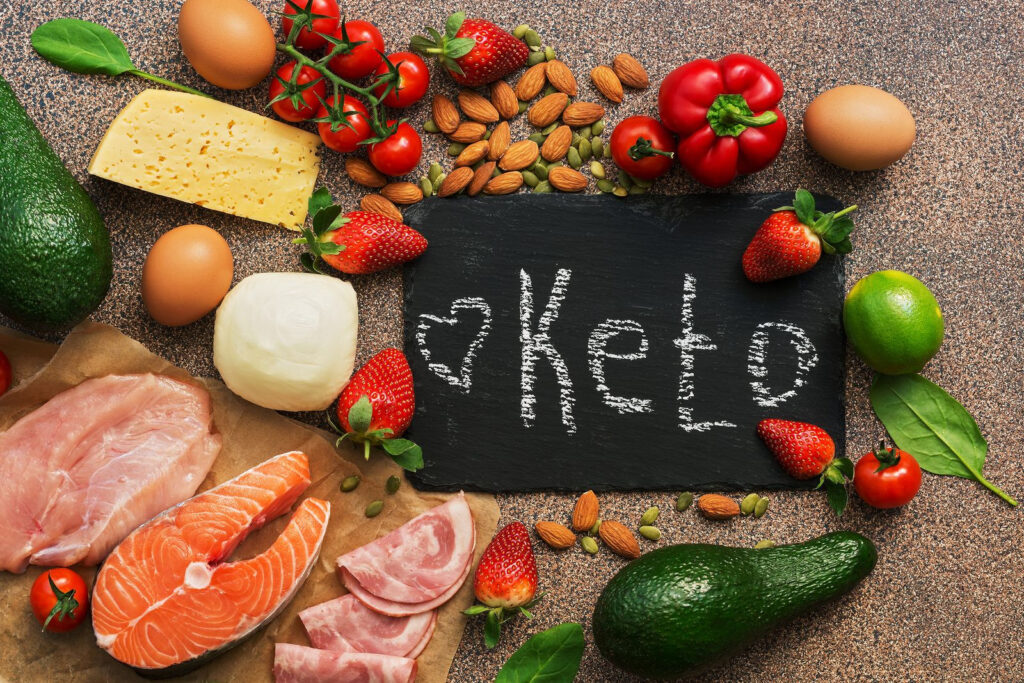The ketogenic diet, or “keto” for short, has become one of the most popular dietary trends in recent years. Known for its potential to promote weight loss, improve mental clarity, and boost energy levels, the keto diet is a high-fat, low-carb eating plan that shifts your body into a state of ketosis. But what exactly is ketosis, and how does the keto diet work? More importantly, what foods can you eat, what should you avoid, and what common mistakes should you steer clear of?
Let’s break it all down in this comprehensive guide to the ketogenic diet.
What is the Ketogenic Diet?
The ketogenic diet is a low-carbohydrate, high-fat diet that aims to put your body into a metabolic state called ketosis. In ketosis, your body burns fat for fuel instead of carbohydrates. This happens when carbohydrate intake is drastically reduced, and fat intake is increased, forcing the body to produce ketones as an alternative energy source.
The standard macronutrient breakdown for a keto diet is:
- 70-75% fat
- 20-25% protein
- 5-10% carbohydrates
This ratio may vary slightly depending on individual goals and needs.
Benefits of the Ketogenic Diet
- Weight Loss: By burning fat for fuel, the keto diet can help you shed excess pounds.
- Improved Mental Clarity: Many people report enhanced focus and cognitive function on keto.
- Stable Energy Levels: Ketosis provides a steady energy source, reducing energy crashes.
- Better Blood Sugar Control: The diet may help regulate blood sugar levels, making it beneficial for people with type 2 diabetes or insulin resistance.
- Reduced Inflammation: The keto diet has anti-inflammatory properties, which may benefit conditions like arthritis.
Allowed Foods on the Keto Diet
To stay in ketosis, focus on foods that are high in healthy fats, moderate in protein, and very low in carbs. Here’s a list of keto-friendly foods:
Fats and Oils
- Avocado oil
- Olive oil
- Coconut oil
- Butter
- Ghee
- MCT oil
- Animal fats (e.g., lard, tallow)
Proteins
- Fatty cuts of meat (e.g., beef, pork, lamb)
- Poultry (e.g., chicken, turkey)
- Fatty fish (e.g., salmon, mackerel, sardines)
- Eggs
- Organ meats (e.g., liver, heart)
Low-Carb Vegetables
- Leafy greens (e.g., spinach, kale, arugula)
- Cruciferous vegetables (e.g., broccoli, cauliflower, Brussels sprouts)
- Zucchini
- Asparagus
- Bell peppers (in moderation)
Dairy
- Full-fat cheese
- Heavy cream
- Sour cream
- Greek yogurt (unsweetened, in moderation)
Nuts and Seeds
- Almonds
- Walnuts
- Chia seeds
- Flaxseeds
- Macadamia nuts
Beverages
- Water
- Herbal tea
- Black coffee (unsweetened)
- Bone broth
Sweeteners
- Stevia
- Erythritol
- Monk fruit
Forbidden Foods on the Keto Diet
To stay in ketosis, avoid foods that are high in carbohydrates. Here’s a list of foods to steer clear of:
Grains and Starches
- Bread
- Pasta
- Rice
- Cereal
- Oats
- Quinoa
Sugary Foods
- Candy
- Cake
- Cookies
- Soda
- Fruit juices
High-Carb Fruits
- Bananas
- Grapes
- Mangoes
- Apples
- Oranges
Legumes
- Beans
- Lentils
- Chickpeas
- Peas
Root Vegetables
- Potatoes
- Sweet potatoes
- Carrots
- Beets
Processed Foods
- Chips
- Crackers
- Packaged snacks
- Sugary sauces and dressings
Alcohol
- Beer
- Sweet wines
- Cocktails with sugary mixers
Common Mistakes to Avoid on the Keto Diet
While the keto diet can be highly effective, many people make mistakes that hinder their progress. Here are some pitfalls to watch out for:
- Not Eating Enough Fat
The keto diet is a high-fat diet, so skimping on fat can prevent you from entering ketosis. Make sure to include healthy fats in every meal. - Eating Too Much Protein
Excess protein can be converted into glucose through a process called gluconeogenesis, which can kick you out of ketosis. Stick to moderate protein intake. - Ignoring Electrolytes
When you cut carbs, your body flushes out water and electrolytes, leading to symptoms like fatigue, headaches, and muscle cramps (the “keto flu”). Supplement with sodium, potassium, and magnesium. - Overeating “Keto-Friendly” Snacks
Just because a snack is labeled “keto-friendly” doesn’t mean it’s calorie-free. Overeating nuts, cheese, or keto desserts can stall weight loss. - Not Drinking Enough Water
Staying hydrated is crucial on keto. Aim for at least 8-10 glasses of water per day. - Not Planning Meals
Failing to plan can lead to poor food choices. Prepare keto-friendly meals and snacks in advance to stay on track. - Giving Up Too Soon
The transition to ketosis can be challenging, especially during the first week. Stick with it, and your body will adapt.
Tips for Success on the Keto Diet
- Track Your Macros: Use an app like MyFitnessPal to ensure you’re hitting your fat, protein, and carb goals.
- Experiment with Recipes: Keep things interesting by trying new keto recipes, from cauliflower pizza to avocado chocolate mousse.
- Listen to Your Body: Pay attention to how your body responds and adjust your diet as needed.
- Consult a Professional: If you have underlying health conditions, consult a healthcare provider or dietitian before starting keto.

The ketogenic diet is a powerful tool for weight loss, improved energy, and overall health. By focusing on high-fat, low-carb foods and avoiding common mistakes, you can successfully achieve and maintain ketosis. Whether you’re new to keto or a seasoned pro, understanding the ins and outs of this diet will help you make the most of its benefits.
Are you on the keto diet?
Share your favorite keto tips, recipes, or experiences in the comments below! 🥑

